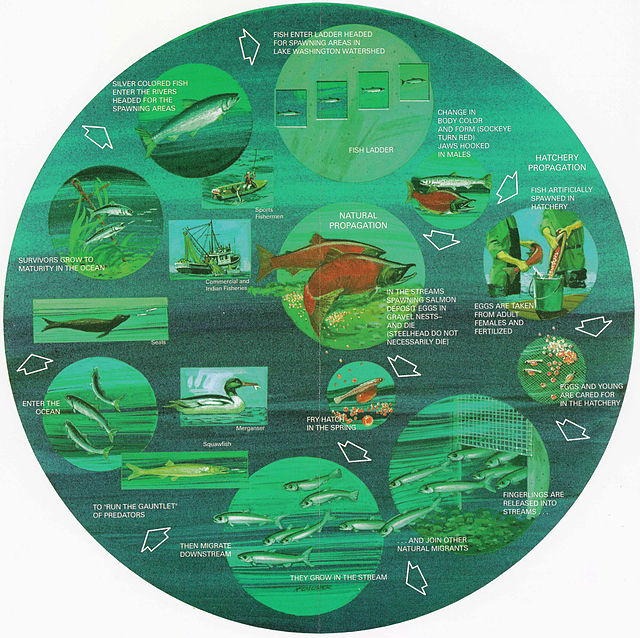The swordfish, also known as the broadbill in some countries, are large, highly migratory predatory fish characterized by a long, flat, pointed bill. They are a popular sport fish of the billfish category, though elusive. Swordfish are elongated, round-bodied, and lose all teeth and scales by adulthood. These fish are found widely in tropical and temperate parts of the Atlantic, Pacific, and Indian Oceans, and can typically be found from near the surface to a depth of 550 m (1,800 ft), and exceptionally up to depths of 2,234 m. They commonly reach 3 m (10 ft) in length, and the maximum reported is 4.55 m in length and 650 kg (1,430 lb) in weight.
Swordfish
Swordfish skeleton at the National Museum of Natural History, Washington, DC
A deep-diving swordfish, photographed in the eastern Gulf of Mexico at 701 meters below the surface.
Stuffed broadbill swordfish
Fish migration is mass relocation by fish from one area or body of water to another. Many types of fish migrate on a regular basis, on time scales ranging from daily to annually or longer, and over distances ranging from a few metres to thousands of kilometres. Such migrations are usually done for better feeding or to reproduce, but in other cases the reasons are unclear.
Many species of salmon are anadromous and can migrate long distances up rivers to spawn
Life cycle of anadromous fish. From a U.S. Government pamphlet. (Click image to enlarge.)






